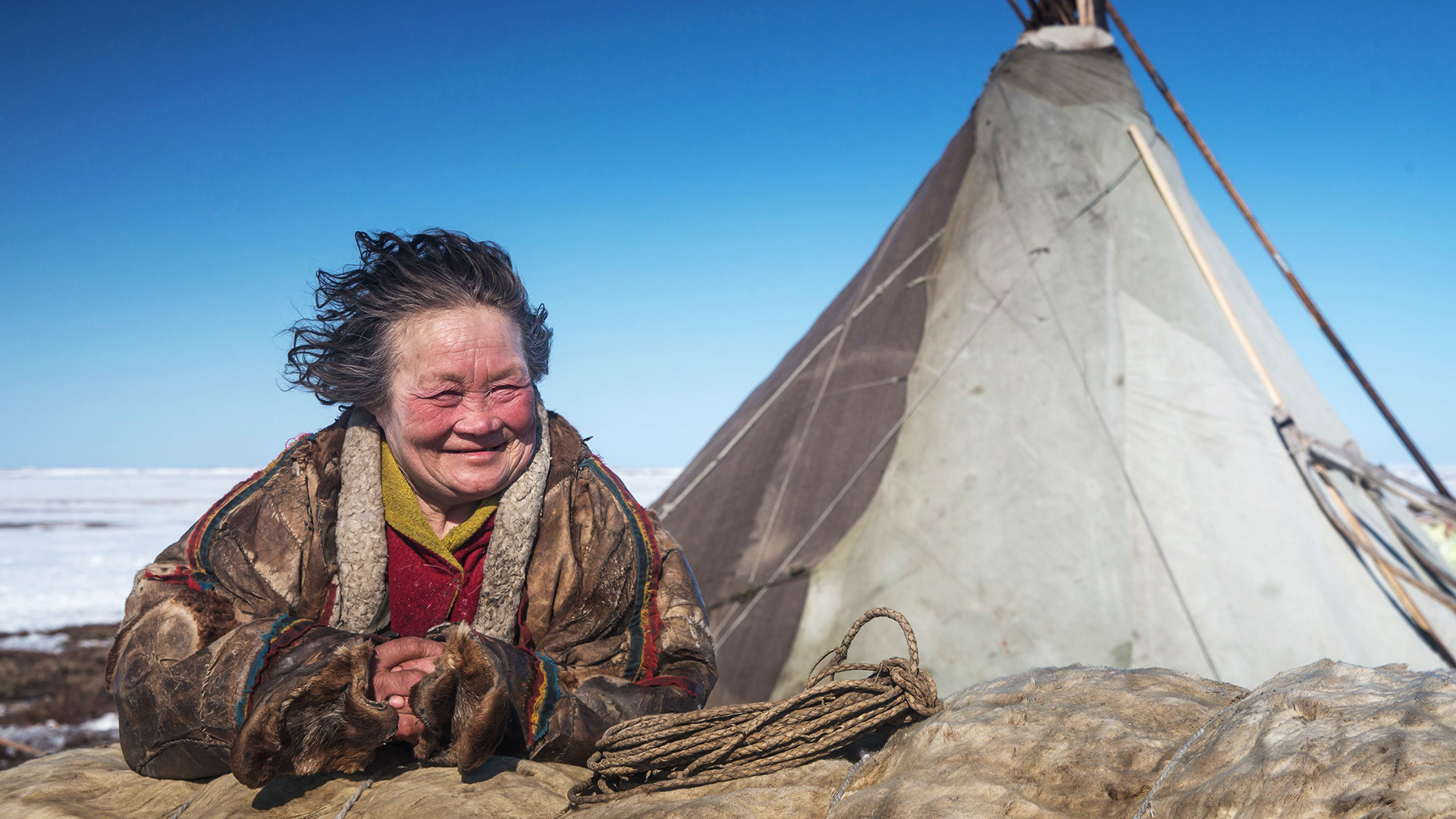
A reindeer herder women looks on at a nomad camp at 150 km from the town of Salekhard, Yamalo-Nenets Autonomous Okrug, May 2, 2016.
Getty ImagesCan you imagine living in a house that needs to be built anew every month? Well, this is exactly what the indigenous peoples of the Russian Far North do. Just like hundreds of years ago, many of them are reindeer herders and travel together from place to place with their homes. So, what does the chum, as reindeer herder' tents are called, look like and how much money does a family need to save up to afford one?
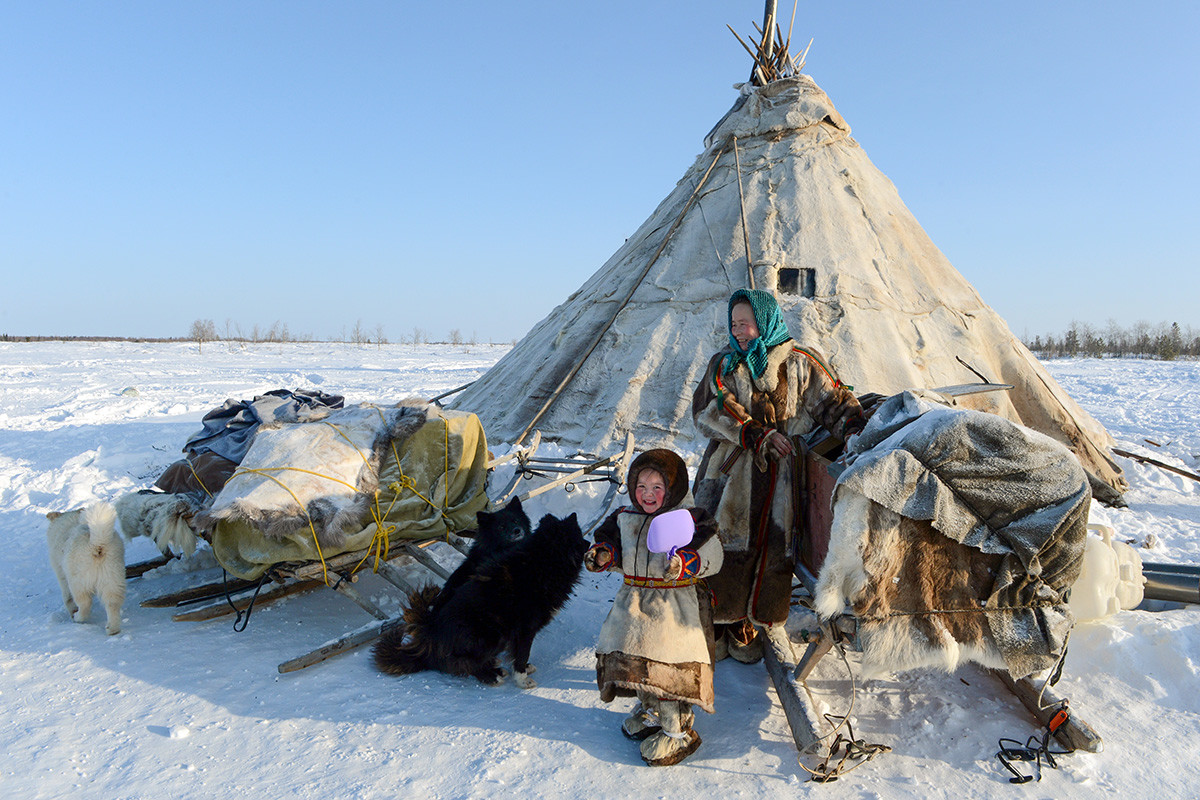
A chum in Yamal.
Sergey Rusanov/SputnikThe chum is a kind of mobile home for nomads. Winters in the Far North are extremely cold and long, especially in the tundra, where there are few trees, so a chum must not only be easy to assemble and move around, but also resistant to the wind and very warm inside. In theory, the design is quite simple. The framework is made from spruce poles, set in a cone and covered with reindeer hides in the winter and a tarp in the summer.
See here how to put up a chum:
It takes about an hour to put one up. Traditionally this task falls on women (and in 2018, chum worker was officially registered as a job title), but in modern times this is not so strictly observed since doing it together makes things much faster.
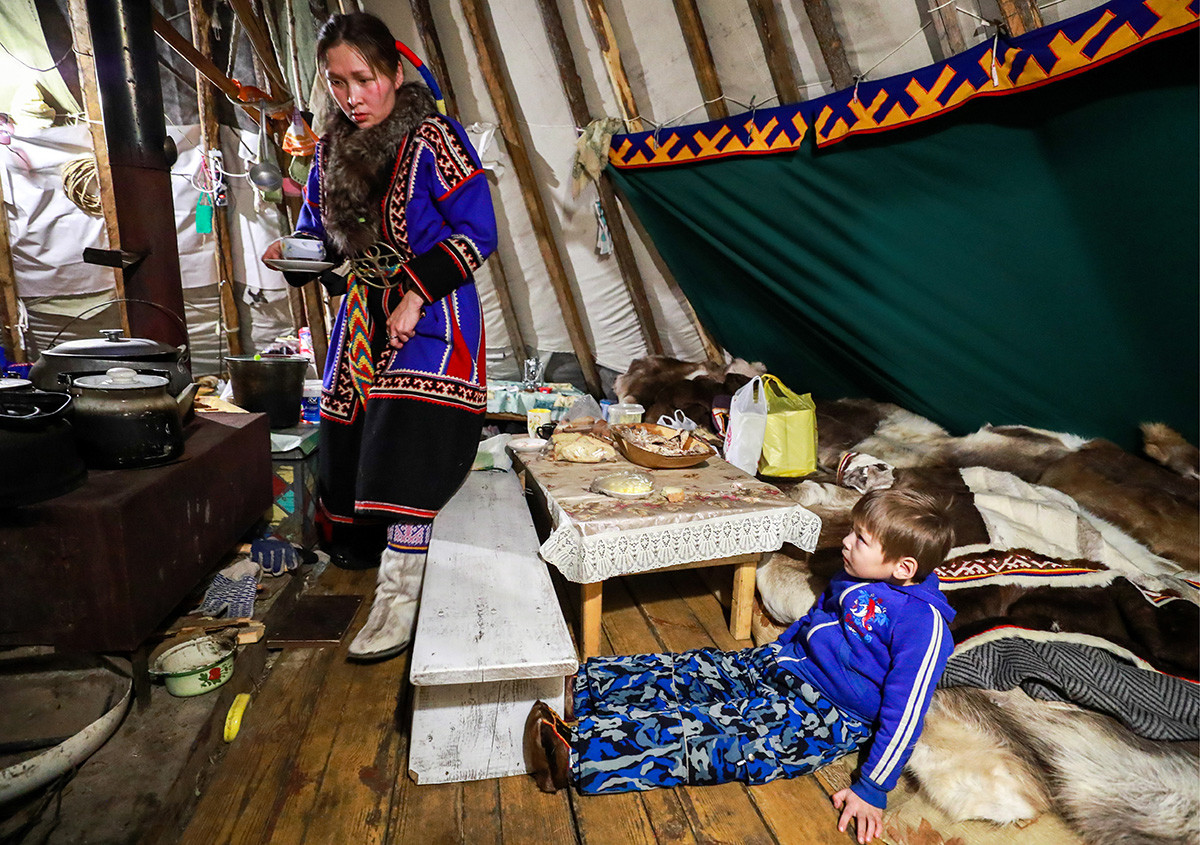
A chum-keeper's helper prepares breakfast in a chum in the village of Gornoknyazevsk, Priuralsky District, Yamal. 2018.
Donat Sorokin/TASSThe central space inside a chum is taken by the hearth, or its modern-day equivalent, a metal stove that provides heat and is used for cooking. The smoke goes out through a hole in the “roof.” Around the stove, a floor is laid out consisting of wooden boards covered with reindeer skins. If necessary, a chum can be divided into separate rooms. The larger a family, the bigger its chum, and in turn the more poles and reindeer skins are required to make it. A single nomad camp might have several chums in it since nowadays reindeer herders work in teams.
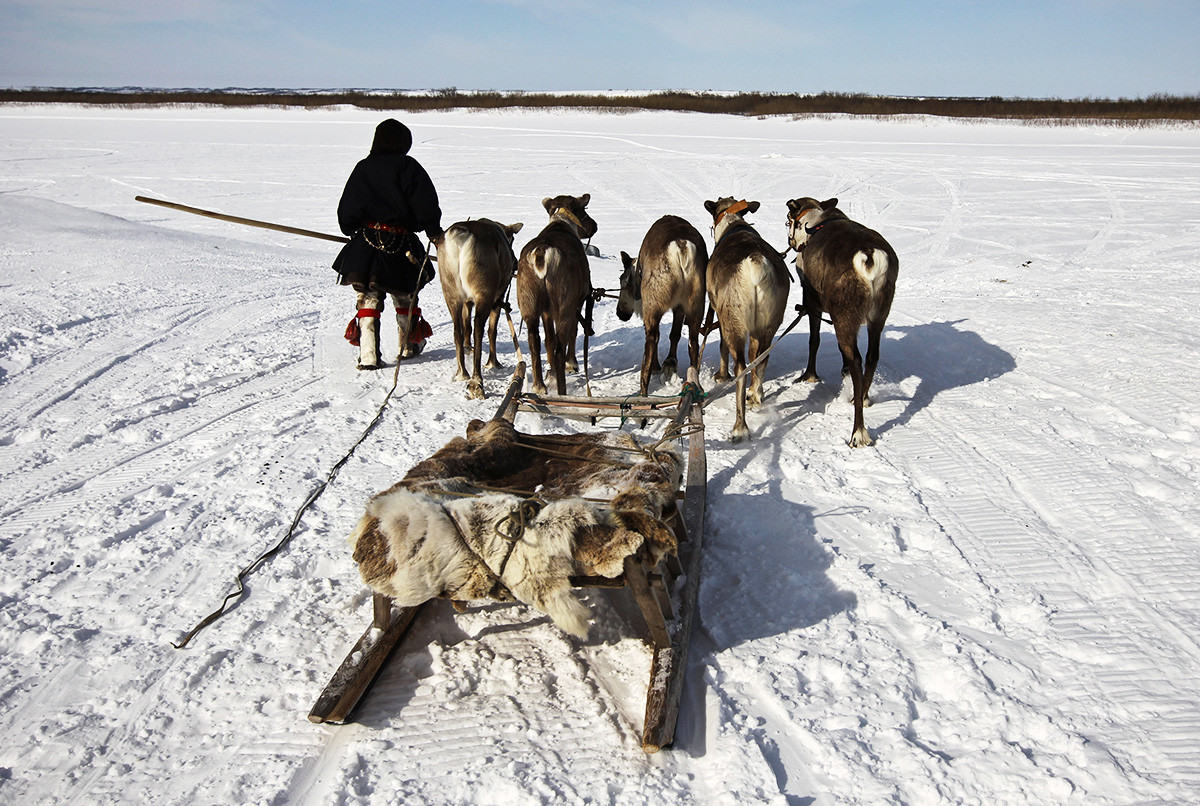
Sledges called narty. Yamal.
Valery Melnikov/SputnikWhen the time comes to move, everything inside is packed and put into sledges (called narty) on the day before departure, and then the following morning the chum itself is dismantled. It takes an experienced reindeer herder about half an hour to take one down.
See here how to take down a chum:
Nomads move very often to prevent their herds of deer from eating all the small vegetation that is present in the tundra. In winter, this means moving once every three or four weeks, and once every week or two in the summer. The routes are more or less the same throughout the year, so the locals can easily find their way in the tundra even without navigators, although they do use modern gadgets as well.

Khanty's chum covered with tarpaulin, Tyumen Region.
Alexander Polyakov/SputnikReindeer herders have snowmobiles, electric generators for charging their phones and laptops, along with walkie-talkies to call ambulance helicopters or rescuers in case of an emergency.
For all its seeming simplicity, a chum is actually a rather complicated and expensive business. First, try finding trees in the tundra to make the poles for it. Depending on the size, one chum usually requires from 25 to 40 poles. Furthermore, these poles do not last forever and after a while they start to rot and need to be cut or replaced (which is quite costly). The lower a chum, the older its poles are.
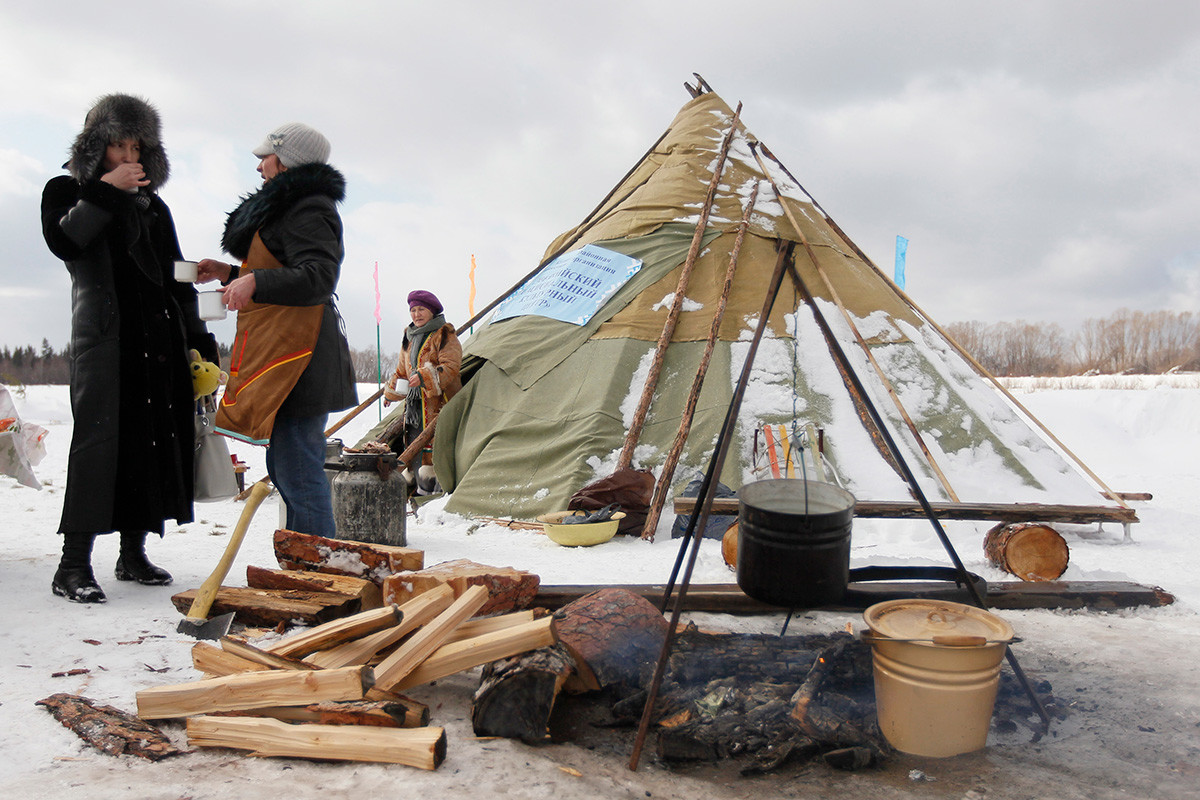
A chum in the Irkutsk Region.
Valery Melnikov/SputnikNext, you need reindeer skins. The more skins, the warmer the chum and the more affluent the family. Given that winter temperatures in Yamal and Chukotka can drop to 50 C below zero, reindeer herders' families consider reindeer hides an essential investment and save up for them for several years and then pass them on to their children. In the absence of reindeer hides, a chum can be covered with summer tarp (or before tarps were invented, the summer version of chums were covered with birch bark).
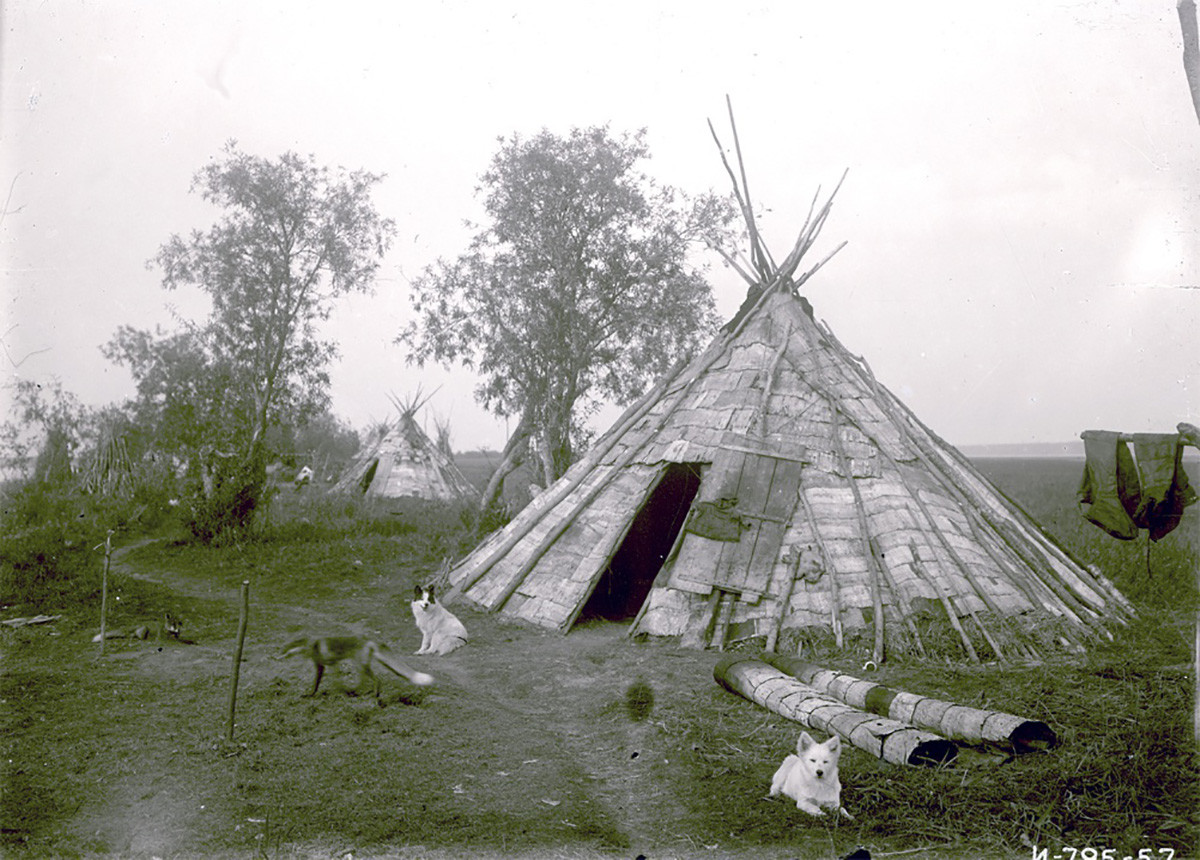
A chum covered with birch bark, 1936. Yamal.
KunstkameraOn average, one chum requires around 60-80 reindeer skins, each of which costs at least 10,000 rubles ($135). No reindeer breeder could afford so many skins all at once because then they would simply have no reindeer left, plus the skins are also needed to make clothes and boots.
If in the past nomads always made their chums themselves, today a young family of reindeer herders can purchase everything they need for one on the mainland. On average, one chum costs one million rubles ($13,500), including both the building materials and a heating stove.
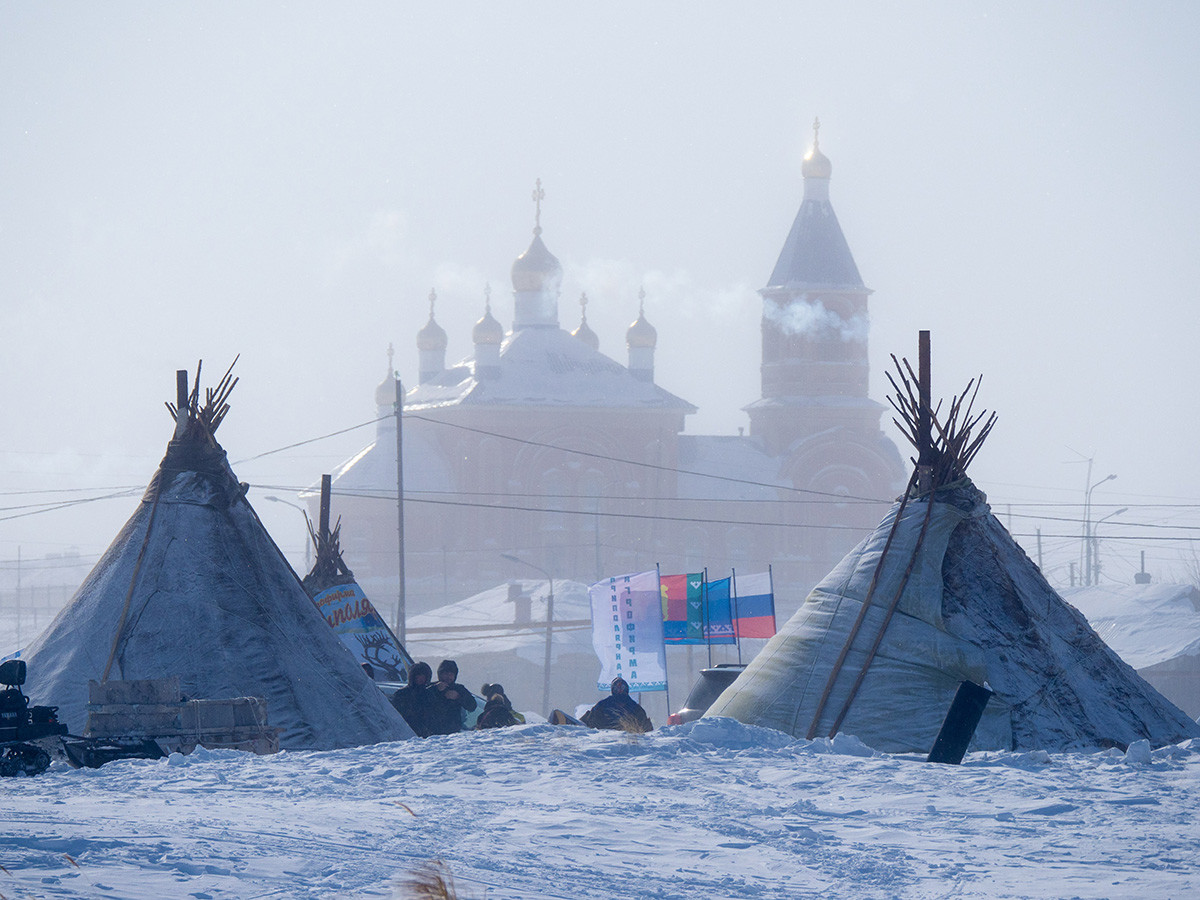
The Day of the Reindeer Herder, Khanty-Mansi Autonomous Okrug.
Ruslan Shamukov/TASSFor this amount of money it is possible to buy an apartment or build a house in this part of the country. And many nomads do indeed have ordinary apartments as well, where they spend their holidays or live in retirement. They get these apartments through state benefits and subsidies. However, in order to work in the tundra, a mobile home is a must and so a family's first priority is saving up for a chum, which they will use for most of the year. In 2020, the regional authorities in Yamal, which is Russia's main reindeer husbandry region, began issuing chum certificates to young families.
If using any of Russia Beyond's content, partly or in full, always provide an active hyperlink to the original material.
Subscribe
to our newsletter!
Get the week's best stories straight to your inbox